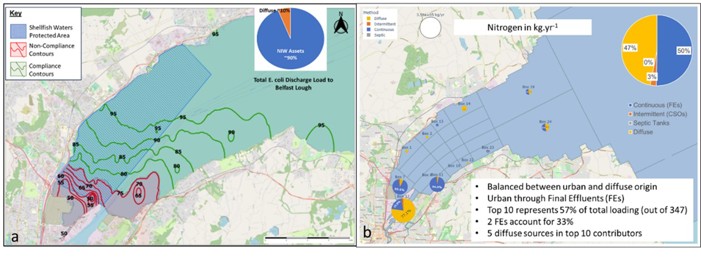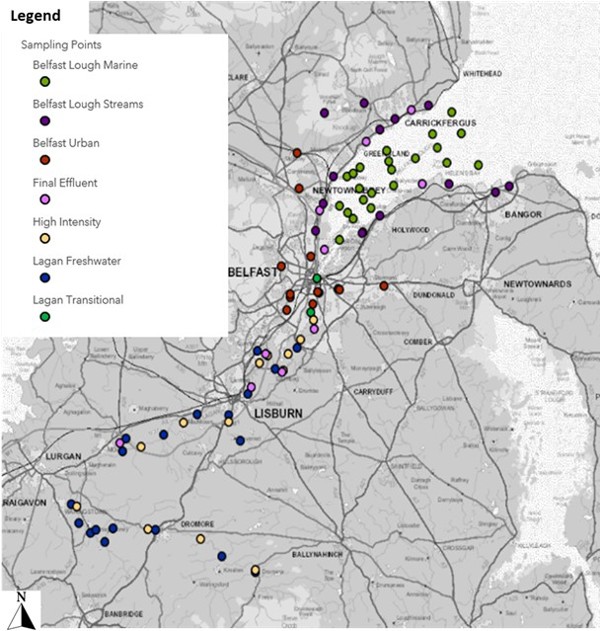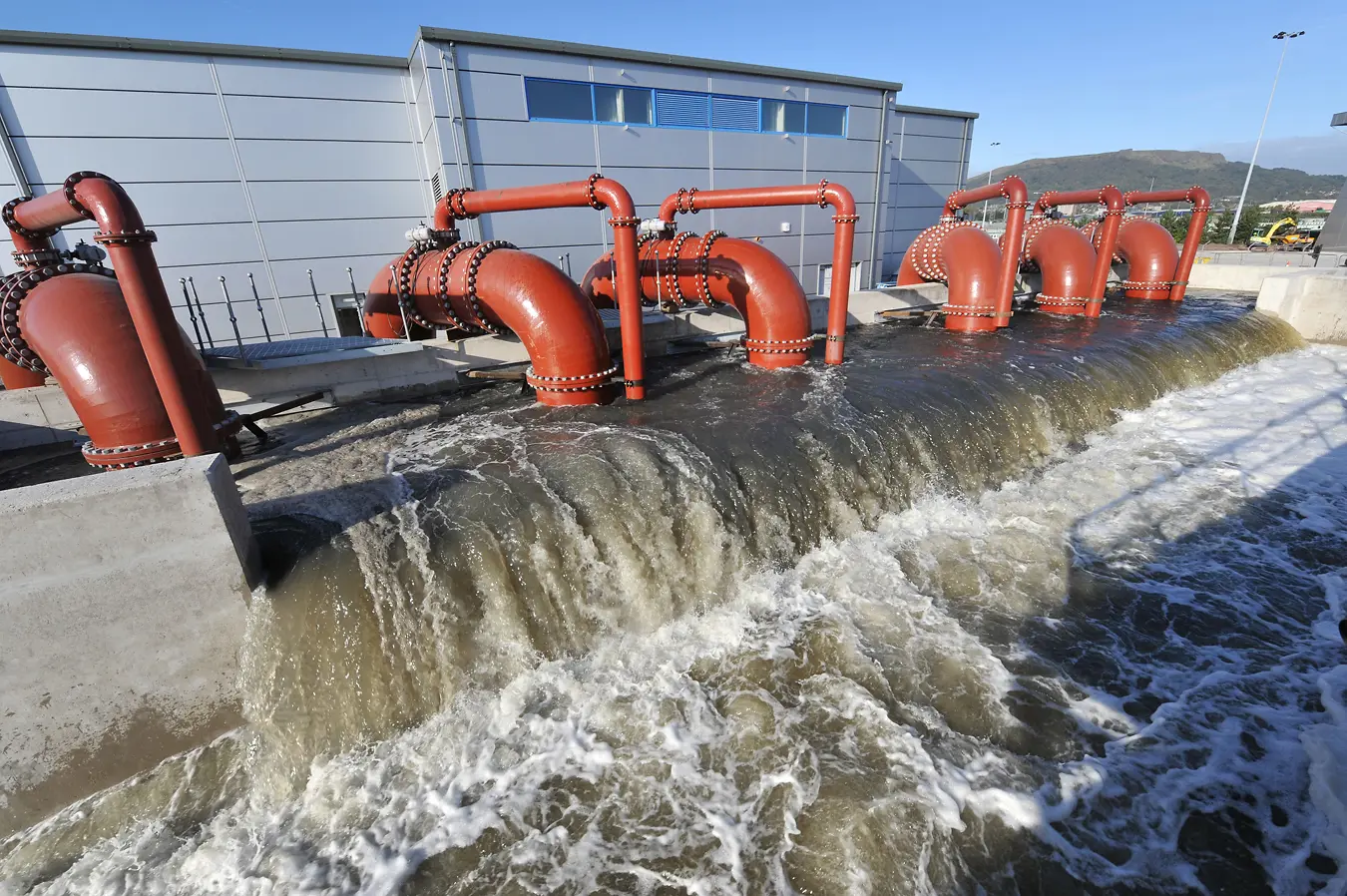NI Water’s Integrated Environmental Modelling (IEM) framework provides an evidence-based approach to the identification of catchment pressures, impacting on water quality in our lakes, rivers and seas. Unlike traditional urban drainage modelling, IEM can determine the sources of inputs that are detrimentally impacting water quality (such as nutrients and bacteria), predict the ecological response, and identify optimised solutions that are necessary to achieve the water quality targets required by the EU Water Framework Directive (WFD).
NI Water is developing IEMs across our networks to investigate WFD drivers, including Bathing Waters, Shellfish Water Protected Areas and nutrients, in both marine and freshwater environments. At a catchment scale, NI Water is identifying the contribution of pollution from sewage and diffuse sources, known as source apportionment, enabling targeted investment solutions to be developed.
Where possible traditional hard engineered solutions are being avoided to reduce the capital investment necessary. Insight from our IEM models can reduce the storm storage requirements which is generating significant capital savings and longer term operational efficiencies as well as helping NI Water to deliver on our carbon and climate commitments.
Belfast Lough – A Case Study
Water quality in Belfast Lough is deteriorating: The Water Framework Directive status of the Lough has dropped to moderate, and the Shellfish Water Protected Area currently fails to meet its bacterial compliance standards.
NI Water has developed an IEM to determine the scale of wastewater investment required to meet water quality targets for Belfast Lough. In agreement with our environmental regulator, Belfast is the first catchment in Northern Ireland to be modelled with fully combined ecological, marine, diffuse land management and wastewater system components.
To investigate the sources of pollution into Belfast Lough, the wider Lagan Valley catchment, covering an area of 610km2 was considered. Both the bacterial and nutrient models were calibrated and validated against an 18-month wet weather sampling programme. Samples were collected fortnightly at over 80 locations
This study, which took over 4 years to complete, has evidenced that around 90% of the Bacteria and 50% of the Nitrogen in Belfast Lough is derived from NI Water assets, predominately final effluent discharges from the main 3 treatments works which discharge to the Inner Lough.
IEM has successfully been used by NI Water to determine the future WwTW discharge standards based on the environmental needs of Belfast Lough, in accordance with regulatory targets.
These include for reducing;
- the discharge of nutrients to prevent eutrophication and algae blooms that can have a highly detrimental impact on the eco-system.
- the levels of bacteria by including UV disinfection at Whitehouse WwTW and Belfast WwTW
- the levels of a range of pollutants by reducing the frequency and volume of storm spills from WwTW overflows, achieved by increasing the treatment capacity and volume of storm tanks


